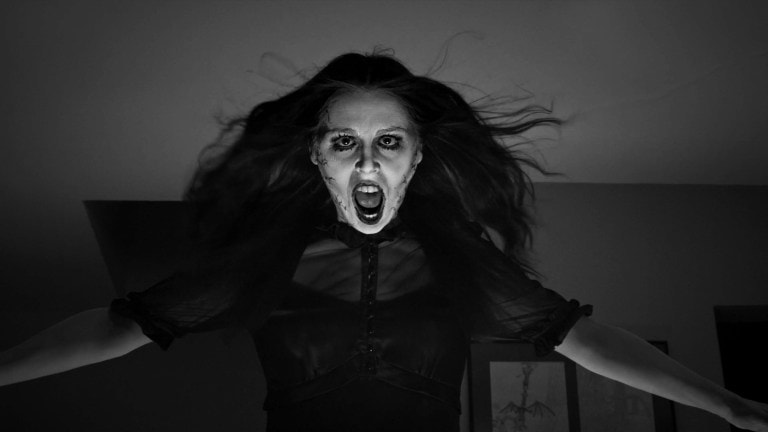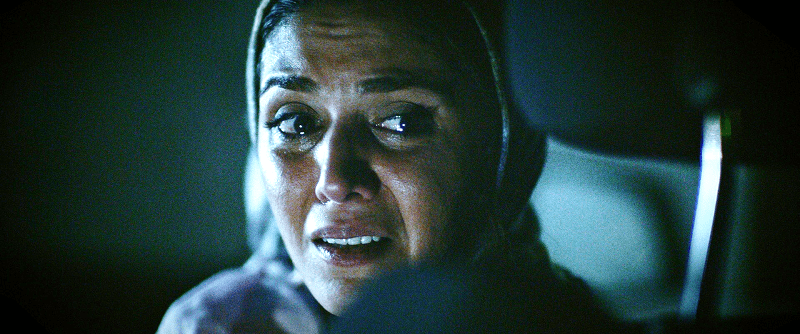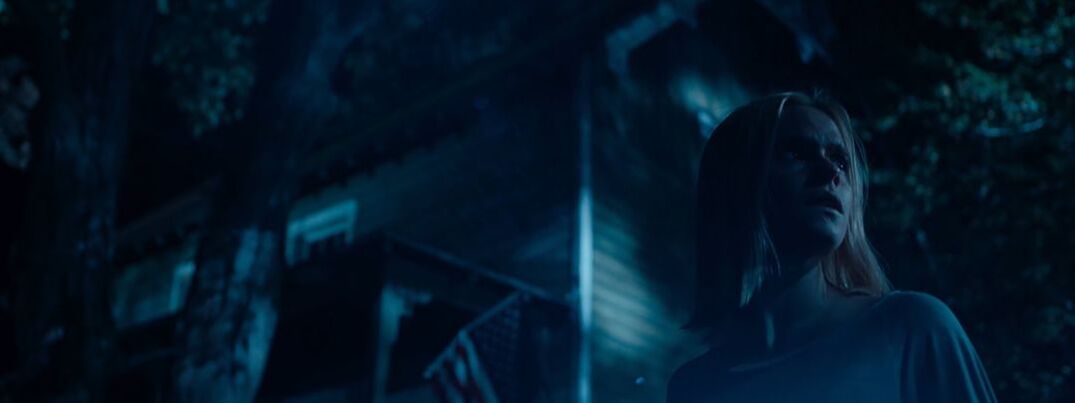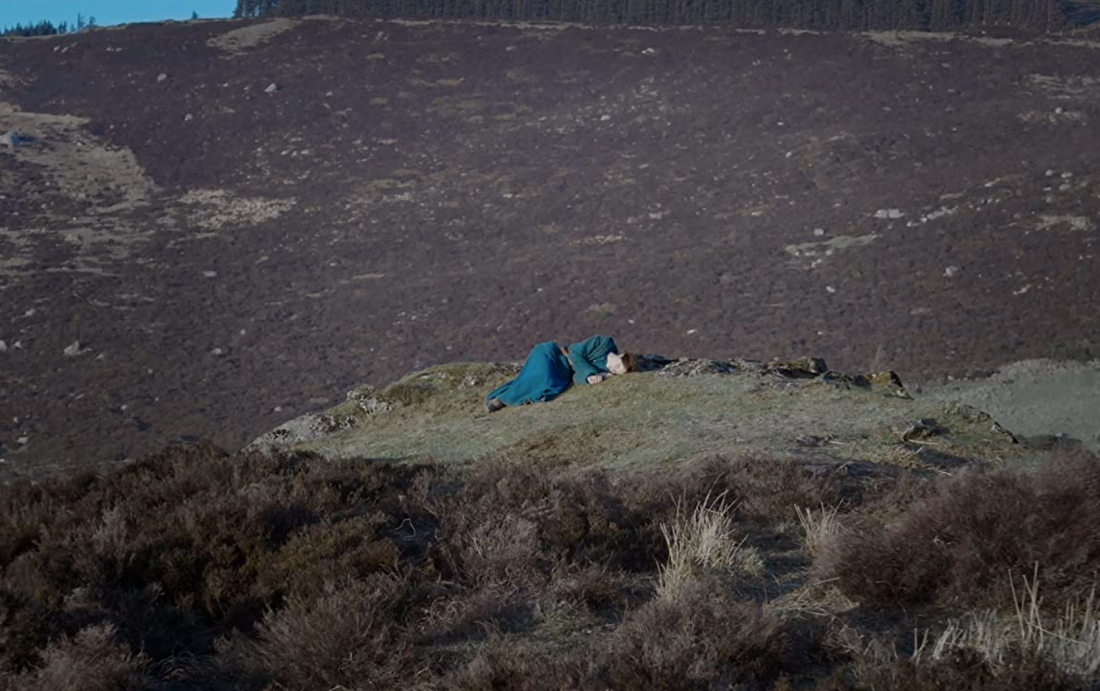|
Originally published on Elements of Madness. Like a well-choreographed action sequence, movies have a lot of moving parts. While certain aspects of a film might not fall into place, the film may do so well in other areas that it turns out alright in the end. With so many different elements at play, movies can usually balance out or even cover up their weak spots. However, Brady Hall’s Burn It All gets so tripped up by its own dialogue that it never quite finds its balance. While there’s clearly a talented team at work behind the camera and in post-production, their talents can’t quite make up for the movie’s cringe-worthy speech.
0 Comments
Originally published on Elements of Madness. Adam Stovall’s micro-budget flick, A Ghost Waits, makes a pretty convincing argument that romance and horror can work really well together. Stovall doesn’t simply juxtapose the genres or jump back and forth between sweet and horrific moments. Instead, he takes the time to explore the space in which romance and horror overlap. Most of A Ghost Waits is simply a fun and easy-going good time that doesn’t require you to think too much, but it’s also got a handful of breathtaking shots that will send chills down your spine (and it’s impossible to tell if those chills are the result of horror or romance). This surprising genre mashup makes the most of its limited resources, showing that craftsmanship and technique can go a long way when it comes to movie making.
Jack (MacLeod Andrews) is a handyman for a property management company. He’s pretty lonely (a fact made obvious by how much he talks to himself) and devastatingly underappreciated by his boss and friends. While working on repairs for a rental house, he quickly discovers why all the former tenants left so suddenly. The house is haunted by a self-confident, no-nonsense ghost named Muriel (Natalie Walker). For years, it’s been Muriel’s job as a “spectral agent” to scare away every single person who moves into “her” house. While Jack has pretty much the opposite job (to fix up the house so that more people can move in), the unlikely duo quickly form a bond. Of course, that bond is tested as it’s stretched between the world of the living and the world of the dead, and a good-old-fashioned lover’s dilemma ensues. Originally published on Elements of Madness Kourosh Ahari’s psychological thriller, The Night, is a stellar example of a film that may not have the next best original ideas within its genre, but is so well done that it is nonetheless entertaining and worthwhile. Despite a handful of predictable plot points and stereotypical gendered conflicts, The Night’s talented cast and distinct style create a spine-chilling, mind-bending, what-did-I-just-watch experience that reminds us why the horror genre is so exciting.
★★★☆☆ As a descendant of the aquatic-creature-horror genre (sub genre? Sub-sub genre?), Braden R. Duemmeler’s feature directorial debut, What Lies Below, naturally inherited some Universal Classic Monsters nostalgia. Besides Creature from the Black Lagoon’s “Gill Man,” (1954) the common ancestor of so many cinematic water-terrors, What Lies Below also takes cues from a handful of other film classics. There’s dashes of Spielburg in the eerie lights that glow from the bottom of the lake, bits of Friday the 13th (1980) in the film’s isolated lake house setting, and echoes of dozens of teen summer camp films in the bright colors of the opening scenes. What Lies Below pulls together an eclectic mix of movie influences, but the question is whether or not all this inspiration actually works together. Although it is an entertaining thriller overall, What Lies Below takes on a bit more than it can handle. The film never quite comes into its own, jumping shakily back and forth between different themes and schemes.
★★★☆☆ Excessive and explicit violence on screen always leads to questions about whether such images are necessary. If a director packs their movie with medieval torture and bodily trauma, does that violence serve a purpose, or is it simply a sadistic celebration of gore that delights in human pain? Is the audience expected to enjoy the blood and torture, or are they likely to have a more complex viewing experience? After watching the trailer for Sleepless Beauty, a torture horror film from director Pavel Khvaleev, I’ll admit that I had low expectations for the film as far as it’s use of violence, and I prepared myself for excessive gore with little meaning or thought behind it. However, I found myself pleasantly surprised by Sleepless Beauty, which, although by no means groundbreaking or flawless, makes a definite attempt to substantiate its numerous torture scenes with a bit of social commentary. While it does not succeed in every instance, Sleepless Beauty aims to create a sympathetic victim, explore her mental state, and ask relevant questions that go beyond the blood and guts on screen.
Originally published on Elements of Madness 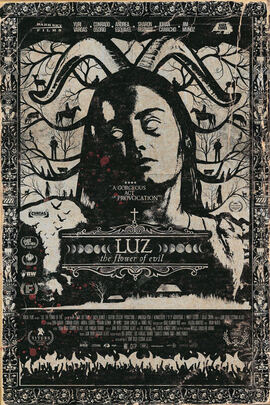 Last year, Ari Aster set the bar high for “daylight” horror films with Midsommar, a terrifying fantasy that casts its disturbing events against a beautiful, blossoming, sunlit backdrop. The genre-play proved to be quite successful for Aster, although the effect is not so much scary as it is genuinely disturbing. Fans of Midsommar will find a somewhat similar effect in Luz: The Flower of Evil, a folk-horror fantasy from writer/director Juan Diego Escobar Alzate. Combining the narrative elements of religious-cult horror films such as The Other Lamb (2019) with the vibrancy of Midsommar, Luz: The Flower of Evil is a stunning and layered exploration of faith, evil, and the search for meaning. Originally published on Elements of Madness 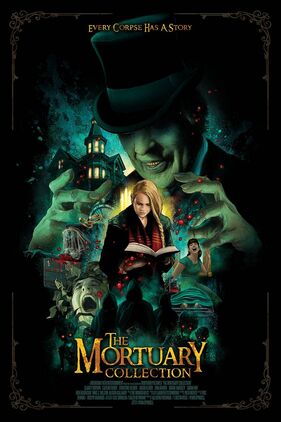 The word “nightmarish” is one of those terms frequently thrown around when describing horror films. While the jump-scares, villains, and gore of the horror genre can certainly haunt us in our sleep, oftentimes, the plots of horror movies are quite meticulously designed and follow a much more logical story than real nightmares. Despite their terrifying nature, narrative horror films make much more sense, and are therefore much easier to follow, than our dreams. Unless you have some higher form of subconsciousness that employs a team of award-winning writers to plan out your dreams, real nightmares are so bizarre, fragmented, and convoluted that they probably wouldn’t bring in a lot of cash at the box office. While most horror movies don’t accurately represent the experience of a nightmare, anthology horror films can come pretty close. Just like a nightmare that pulls your mind back and forth among a hodgepodge of strange and unlikely situations, even tricking you into thinking you are someone else for a while, anthology films guide us through a series of loosely-connected and bizarre short stories. These stories, like a nightmare, frequently switch protagonists and force our minds to work harder to make connections between everything we are seeing. In that sense, writer/director Ryan Spindell’s feature debut, The Mortuary Collection, is a nightmarish anthology horror film. Screening at the Fantasia International Film Festival, The Mortuary Collection is both a tribute to classic cinema and a unique creation of its own. Originally published on Elements of Madness 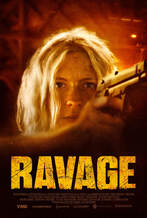 Anyone familiar with rape-revenge films knows that the formula for this horror sub-genre can be particularly tricky. While the genre continually offers up new ways for audiences to process and discuss trauma, rape-revenge films can be quite problematic when not handled correctly. Writer/director Teddy Grennan’s latest film, Ravage, thankfully avoids one of the most common and offensive clichés of the genre: sexualizing the protagonist as a victim of violence and trauma. Unfortunately, however, Ravage also manages to create new problems of its own. ASMR short “Tingle Monsters” is a chilling slice of internet horror with an important message6/24/2020 Originally published on Elements of Madness For those who enjoy the soft whispering, feather-like brushing, and light tapping of ASMR videos, the idea of “ASMR horror” may be especially unsettling. Horror works extremely well when it invades our safe spaces, and directors often succeed by setting their horror films in places where we don’t expect to be scared. However, for those who find ASMR annoying or even anger-inducing, this popular internet sensation may create horror all by itself. If you’re in this second category, you may find yourself yanking off your headphones or muting your device while watching Alexandra Serio’s new short, Tingle Monsters, an ASMR horror film. Shot like a livestream, the 10-minute film is a creative and original piece that speaks to both online sexual terror and the dangers of the internet in general.
Originally published on Elements of Madness If Céline Sciamma’s recently released Portrait of a Lady on Fire paints a picture of female community and camaraderie at its best, honing in on the lives of women as they create space for each other outside of patriarchal society, then Malgorzata Szumowska’s The Other Lamb illustrates the opposite end of the spectrum. With a fervent religious cult as the vehicle for its nightmarish story, The Other Lamb spins a haunting tale about the limitations of female friendship and identity under patriarchal influence. This “tale” is, of course, still an everyday reality for many women, and the horrors of the story will no doubt resonate with a large audience. It’s cathartic and angry, but before releasing its rage, it sympathetically explores touchy subjects like desire, Stockholm syndrome, and the confusing web of signification that fights for control over the female body.
|
"Our embodied spectator, possibly perverse in her fantasies and diverse in her experience, possesses agency...finally, she must now be held accountable for it." Categories
All
|



